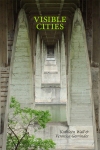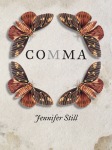 Guy Gavriel Kay. A Brightness Long Ago. (Viking 2019).
Guy Gavriel Kay. A Brightness Long Ago. (Viking 2019).
If, like me, you are a fan of Kay’s historical novels set in another world so like & unlike our own, & especially if you enjoyed the earlier Sarantine Mosaic & his most recent Children of Earth and Sky, then you will find A Brightness Long Ago another profoundly moving entertainment. It’s not a prequel in any usual sense of the term, but the story takes place in that same world approximately 25 years earlier, & a few of its minor characters figure a bit in the previous novel. Nevertheless, this novel narrates various events in Batiara, with just occasional references by some figures to Sarantium, the embattled great city to the East. Rather it focuses, especially, on the bitter feud between the 2 most eminent & best mercenary leaders of their generation, as seen & experienced by one minor figure, who nevertheless narrates large parts of the story. This is something new for Kay, who has generally used a subtle & varied limited omniscient narration in his other historical fantasies/fantastic histories, & still does so here, constructing layers of narrating with subtle shifts backward & forward in time.
Guidanio Cerra remembers his youth, when three people changed his future, as he sits among the Twelve in Seressa deciding on the future of some of the central figures in Children of Earth and Sky. The son of a tailor in Seressa, by good fortune he was sent to the greatest school in Batiara, & from there to serve in the court of the ruler of a smaller city, Mylasia. Thus he is present in the palace the night a young woman assassinates Mylasia’s brutish count, known as ‘the Beast,’ & by choosing to help the wounded girl, whom he already adores, to escape, he changes not only his life, but the lives of many others.
Adria Ripoli, the daughter of the ruler of another city, the fast rising Macera, has been living with her aunt & the mercenary leader Folco Cino d’Acorsi, for whom, because she is intelligent, willful, & unwilling to be just another high born woman, she has chosen to attempt the dangerous feat of murdering ‘the Beast.’ Wounded, & helped to escape Mylasia, she will be tended by another fearless & intelligent woman, a ‘pagan’ healer who will encounter both Guidanio & Adria again (& also play a part in Children of Earth and Sky).
Folco is always trying to improve his own small city, & has a terrible, lifelong, conflict with the other great mercenary commander, Teoboldo Monticola di Remigio; & their various battles form the major narrative arc of A Brightness Long Ago, one in which Guidanio plays a minor but significant role. Kay weaves their stories, & those of the passionate love each feels for his wife, with the rivalries (economic always leading to some kind of violence, often war) of the various city-states, not least Seressa, where the acting duke, Ricci, takes Guidanio under his wing (& will become the head of the ruling Twelve in Children of Earth and Sky).
A Brightness Long Ago ends as the long twilight of Sarantium comes to a close when it is finally taken by the Asherites led by Gurçu, an event whose repercussions are still being felt some 25 years later in Children of Earth and Sky. In this novel, that event is shattering & affects political life across Batiara, as well as the individual lives of many of the protagonists.
Once again, though with the added aspect of some of the tale being the remembrance of one man whose whole life has been shaped by what happened around & to him when he was young, Kay fully imagines a world full of violence & passion (his novels are grand adventures, yes, but also, always, with tales of deep love woven into the narrative fabric) in which individuals must find a way to live, but also to live well. It’s also an historically accurate representation of that world in showing how violent it is & how it proscribes women’s freedom. Yet, as always, his narrative discovers a few strong, intelligent women who can find ways to live more freely than generally allowed, & Kay represents their battles for fuller selfhood as highly positive however high the cost.
A Brightness Long Ago delivers another tense, somber, brilliantly lit, highly complex, & often moving tale of war, court intrigue, love, &, always, loss of the kind we have come to expect of Kay. His fans won’t be disappointed, & new readers will want to find & read more.

 Kathleen Wall & Veronica Geminder.
Kathleen Wall & Veronica Geminder.  Kelly Shepherd.
Kelly Shepherd.  Jenna Butler.
Jenna Butler.  Michael Ondaatje.
Michael Ondaatje.  Jennifer Still.
Jennifer Still.  Stephen Cain.
Stephen Cain.  John Kinsella.
John Kinsella.  Claire Kelly.
Claire Kelly.  Sandra Ridley.
Sandra Ridley.